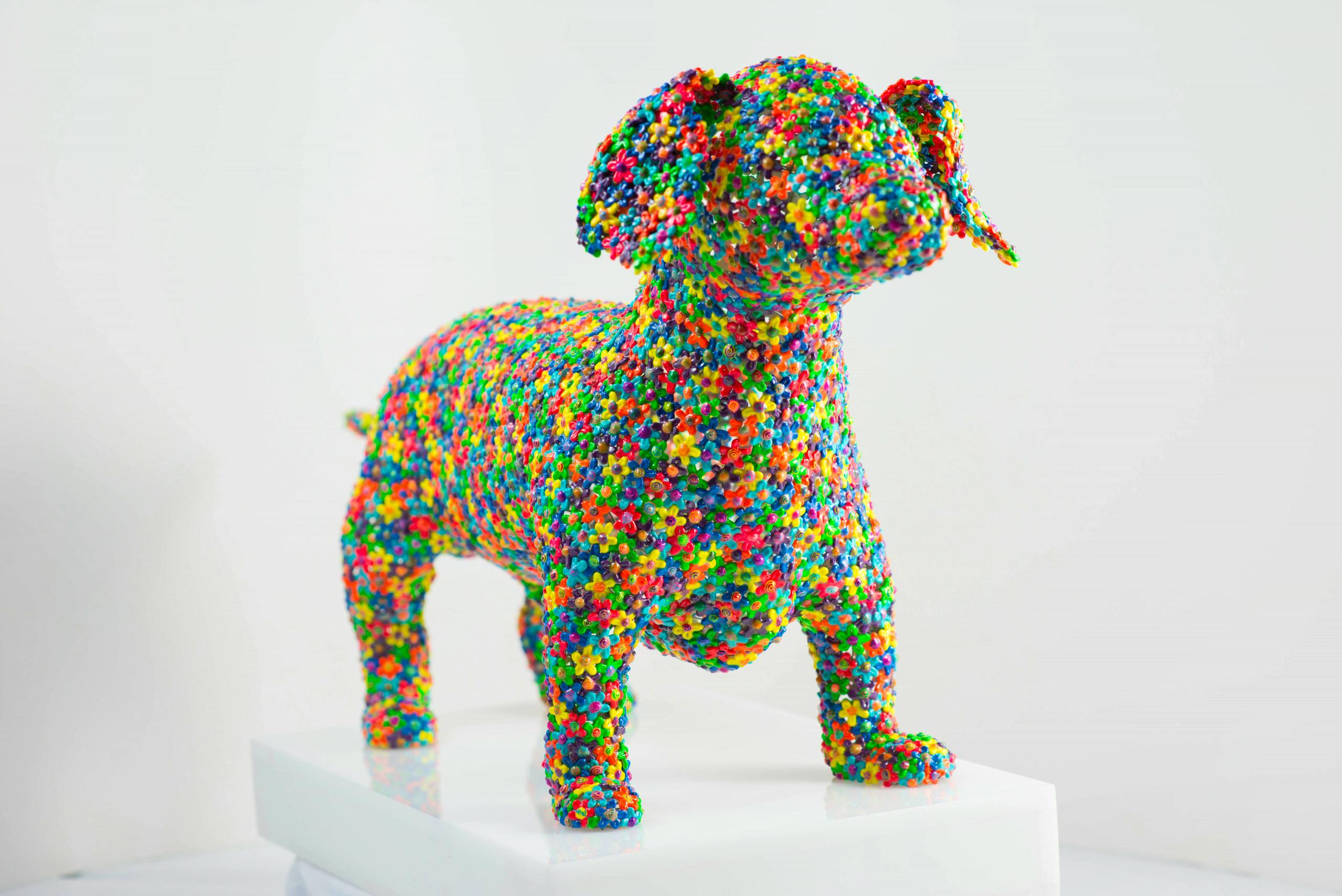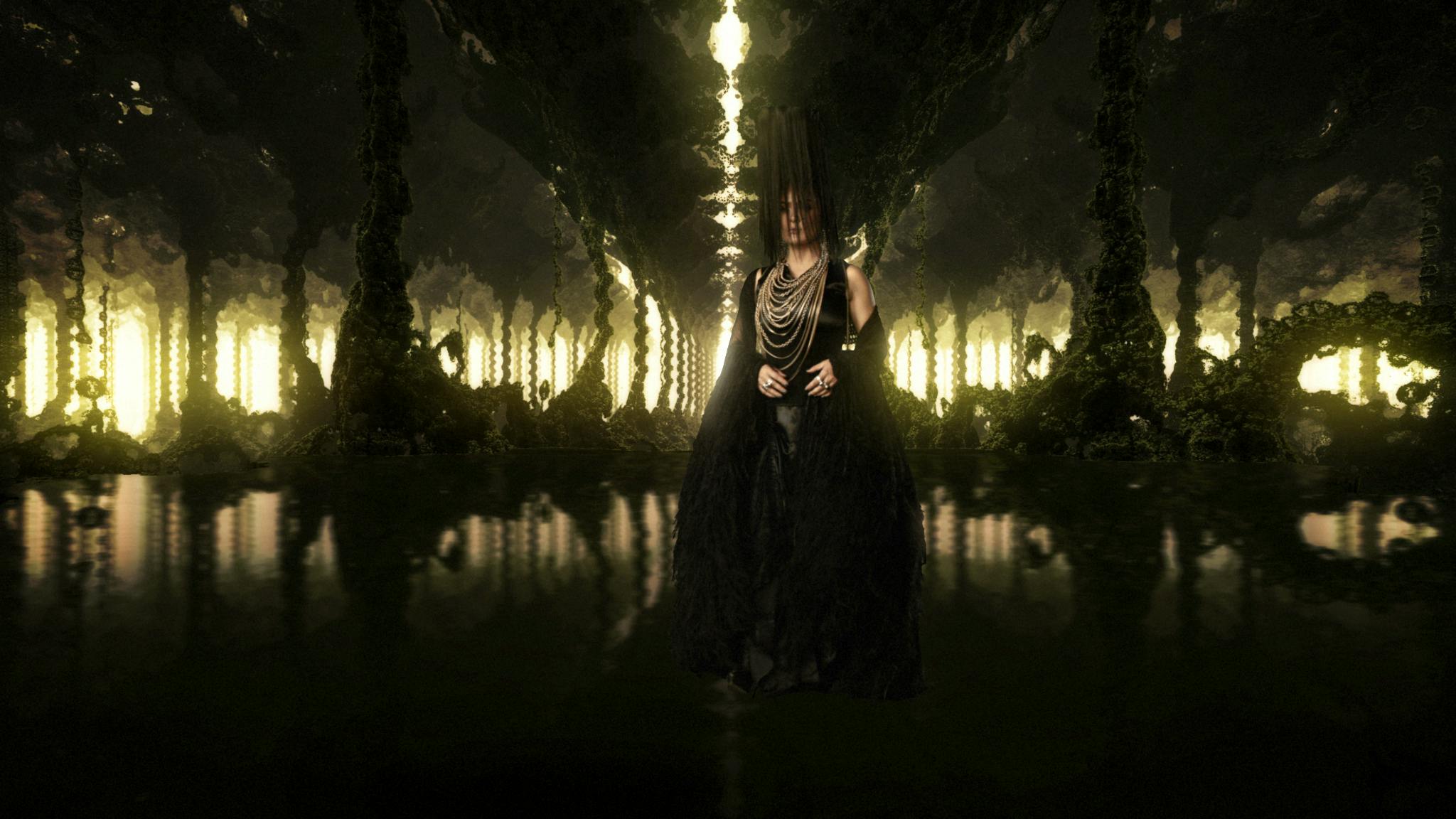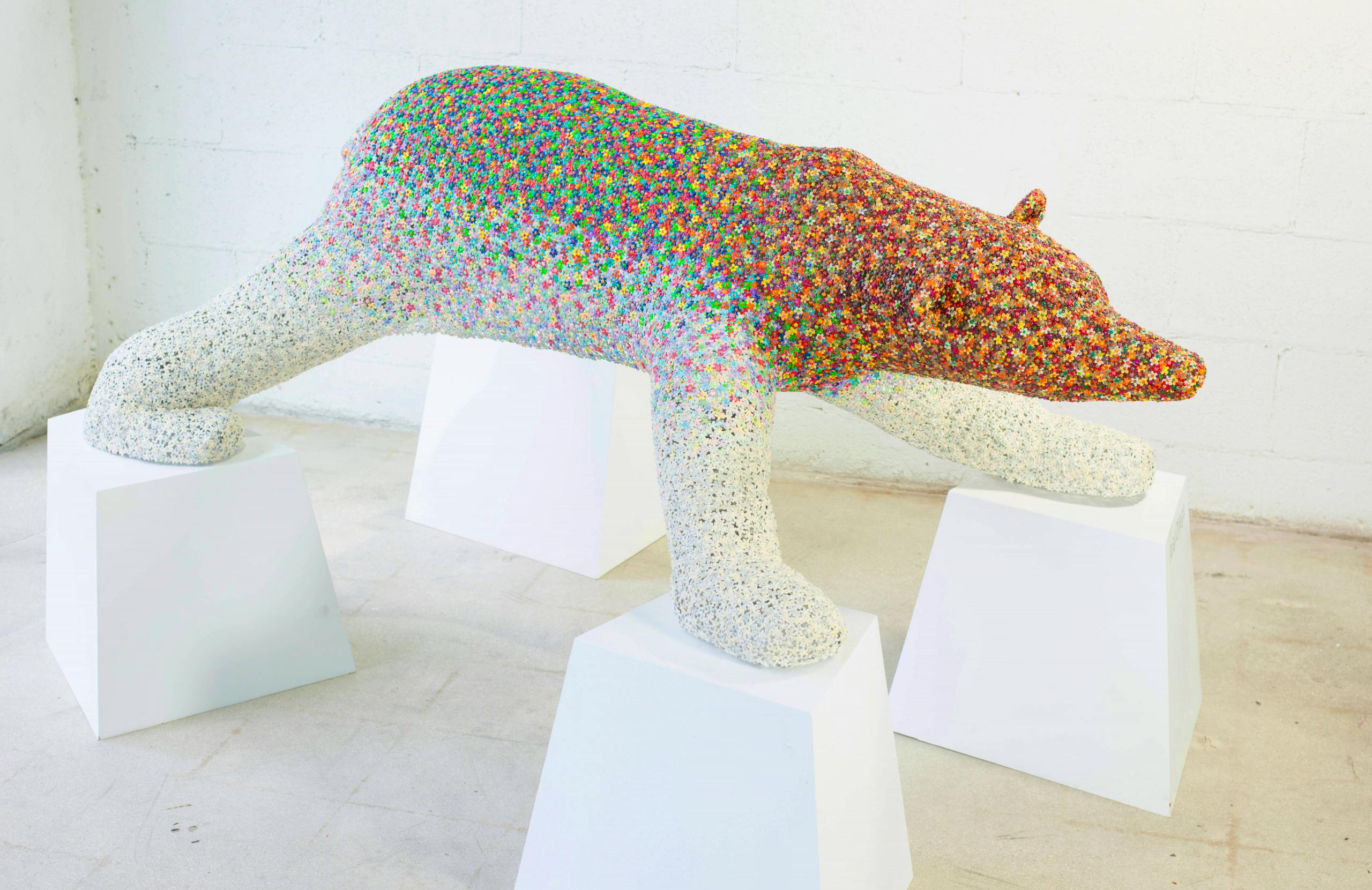Digitisation is the way forward for inventive authenticity
Authenticity can make the difference between a multi-million-pound art investment and that same purchase being worthless. In the age of fake news, any system that can guarantee the reliability and consistency of information about an artwork can prove invaluable.
A relatively new concept in the world of tech, digital twinning is even newer in the art world – in short, it enables artists to create digital representations of their work. A leader in this space is .ART Digital Twin, a full-fledged ecosystem that addresses several key concerns for artists, including IP rights protection, certification, and monetisation of digital art objects. Launched in 2019, it integrates a range of cutting-edge tech solutions to empower the art community – including catering to the growing demand for so-called ‘lazy’ NFT minting.
“The traditional art world is very resistant to digital,” explains acclaimed artist and filmmaker Martha Fiennes. “The NFT explosion changed that, but the establishment needed that market to settle down,” she adds. “It didn’t have filters. There are usually sentinels at some gates, somewhere, who say that work is interesting and relevant.”
Top: Resilient, by Ariel Ortega; Above: still from Yugen, by Martha Fiennes
Fiennes is right at the coalface: her experimental art film Yugen, featuring Salma Hayek-Pino, was the first art object registered using the .ART Digital Twin service. “Establishing provenance using the blockchain is obviously the way to go,” she says. “.ART is a pioneer in this area: this service is still in beta, but it’s an area I’m very curious about.”
DEEPER UNDERSTANDING
“Digital twinning creates an enclosed ecosystem that’s tailor-made for artists,” agrees Miami-based artist and sculptor Ariel Ortega who, like Fiennes, is a proud early adopter of the technology. “It’s simple, intuitive and cost-effective.”
.ART Digital Twin acts like a digital notary, storing metadata about the work – including videos, images, descriptions, and ownership transfers. It does so securely and permanently using modern blockchain technology as well as the long-established Domain Name System (DNS), dating back to the early days of the internet.
Factual details such as artist’s name, title of the work and the date of its creation are added using the international art identification standard Object ID, which is used by UNESCO as well as many major law enforcement agencies. But .ART Digital Twin goes further, also storing qualitative details about the creative process, inspirations, influences, and intended meaning. The more ‘layers’ of information are attached to an art object, the more likely it is to experience an increase in value and, in turn, price. Looking further ahead, it may also help future-proof art objects for their integration into the metaverse.
 Loki, by Ariel Ortega
Loki, by Ariel Ortega
“When I make commissions, I don’t always have the opportunity to share my thoughts to the buyer,” explains Ortega. “It adds so much to the purpose of buying art. Some people may prefer to leave it open to creative interpretation, but direct access to the artist’s thought process is there if they want it.”
ENHANCED APPRECIATION
Fiennes’ film background has also instilled the importance of thorough credits to acknowledge the wider team. And when the work explores emerging technologies or ground-breaking techniques, this kind of detail can also add value.
Named after a Japanese aesthetic concept of beauty that is fully felt but only partially observed, her Yugen project is a study in the processes of hallucination, from dreams to a meditative perception of reality. Exploring the space between art and artificial intelligence, it rewards viewers with a different thought-provoking experience every time and was created using an adapted Unity game engine.
“This wasn’t possible before,” explains Fiennes, comparing it to a similarly innovative 2011 project – generative moving image artwork Nativity – which was coded entirely from scratch. “I’m not interested in getting into every little anorak detail, but some level of technical description beds it down into originality and helps you to defend the piece.”
 Still from Yugen, by Martha Fiennes
Still from Yugen, by Martha Fiennes
In the future, she aspires to host her entire body of work in the cloud so that collectors can enjoy it immediately on any device. “My work can easily be shown within digital domains because it belongs to a flat moving-image system. It’s a natural fit,” she points out. “There’s a new wave of young collectors who want to hold their artworks on their phone, and not have a vault full of canvases and sculptures.”
MORE ATTRACTIVE TO BUYERS
Despite the many advantages of digital certificates, such as integrating multimedia assets to add depth and colour to the written information, Fiennes notes that the art world remains traditional and reliant on little black books and personal connections. Traditional paper certificates of authenticity are still widely used, and sector-wide evolution may be slow.
“Some buyers need a little more persuasion than others; it depends how informed the collector is about the artist,” suggests Ortega. Much of his work is abstract, so revealing more about his process can deepen a collector’s appreciation. He regularly uses cement as a medium, for instance, as a symbol of mankind’s invasive presence in nature.
Another example is a sculpture called El Ninio, which depicts a polar bear stretched out flat with its paws on white blocks that seem to be drifting apart. The bear is covered with a tapestry of flowers, their colours carefully chosen to represent the four seasons – a detail that Ortega suggests would be lost without the opportunity to explain.
 El Ninio, by Ariel Ortega
El Ninio, by Ariel Ortega
“Some galleries play a role almost like a car salesman, where they’re calling people up to ask if they’re interested in buying,” he says. “As an artist, I would never do that. Digital twinning helps me build a more direct relationship with the people interested in my work.”
CULTURAL PRESERVATION
Both Fiennes and Ortega agree that widespread digitisation and multi-format documentation of art online – from individual artists’ archives to entire museum and gallery collections – has a wider role to play in preserving our cultural heritage. The importance of precise digitisation became evident following the recent fire at Notre-Dame de Paris, which is being restored based on complete digital copies of the cathedral. Less fortunate institutions have not had this option: when Museo Nacional de Brasil was heavily damaged in a fire, for instance, priceless aboriginal manuscripts and artefacts were lost forever.
“As we start entering an increasingly fictional universe, authenticity becomes the greatest threat to the whole system,” suggests Ortega. “Having something that protects that authenticity can only be a good thing.”
An updated beta version of .ART Digital Twin is coming soon. While its success could help shift mindsets within the art world, the goal is to create a global ecosystem – empowering artists to use a full set of enhanced digital tools in new and exciting ways.
The technology may only be in its infancy, but Ortega draws parallels with the publishing industry. “Just as most books are physically printed and released alongside their digital counterpart, art will likely become more accessible when you can sell digital copies of an original,” he explains.
Fiennes agrees that digital twinning could be a natural evolution for the well-established notion of a certificate of authenticity. “We look at our digital lives with a sense of permanence, but there’s always room for change, and the possibility of systems being redefined,” she says.
“Technology answers so many problems for us. Digital twinning can be tailored to all formats. This is an unfolding world, and we’re at the forefront of it. But it’s exciting, and I think it’s unquestionably here to stay.”
Create a free digital twin for your artwork on ip.art – and sign up to the latest news on x.art
